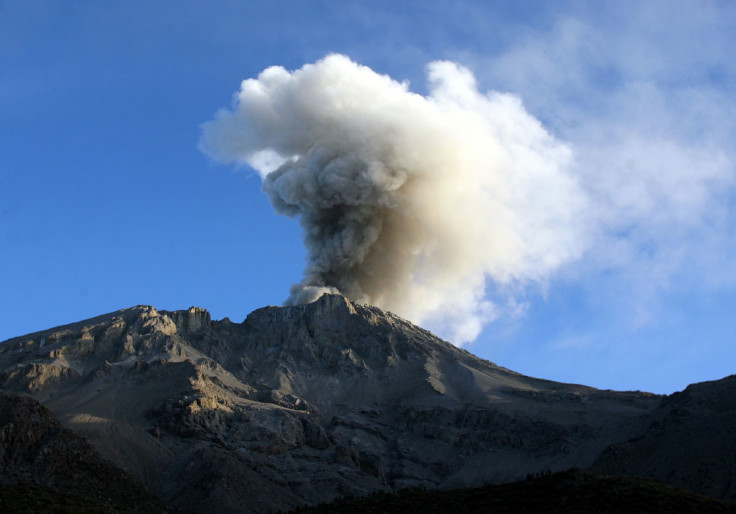
Peru's Ubinas volcano, which has not erupted in forty years, erupted on Tuesday after months of activity. Authorities evacuated villagers to keep them safe from Ubinas' destruction.
Located in southwestern Peru, the Ubinas volcano erupted at 7:42 a.m. and emitted ash for one thousand meters, according to Orlando Macedo, the director of the Geophysical Institute of Arequipa. Peru's geological and mining agency (Ingemmet) has revealed that the volcano became active in September of 2013 and lava had been building up over the past few weeks. El Comercio reports that the Peruvian Geophysical Institute has observed changes in the physical shape of the crater.
Ubinas town mayor, Pascual Coaquira, has revealed that 60 villagers in the village of Querapi, which is located 5 kilometers from the volcano's base, were relocated on Saturday. The people of Querapi are slated to permanently shift from their village to Pampas de Hawái; the decision was revealed after Ubinas became active last September, as preliminary explosions emitted silicon ash resulting in respiratory and gastrointestinal irritation in people.
"We are readying a shelter for refugees from the blasts," said the mayor. "The volcano has been emitting a lot of ash all day, the people in the town (of Ubinas) are having some problems breathing."
The Ubinas volcano is considered to be the most active volcano in Peru, with recorded eruptions dating back to 1550. In the greater Moquegua area, there are said to be roughly 40 dormant volcanoes.
© 2025 Latin Times. All rights reserved. Do not reproduce without permission.




